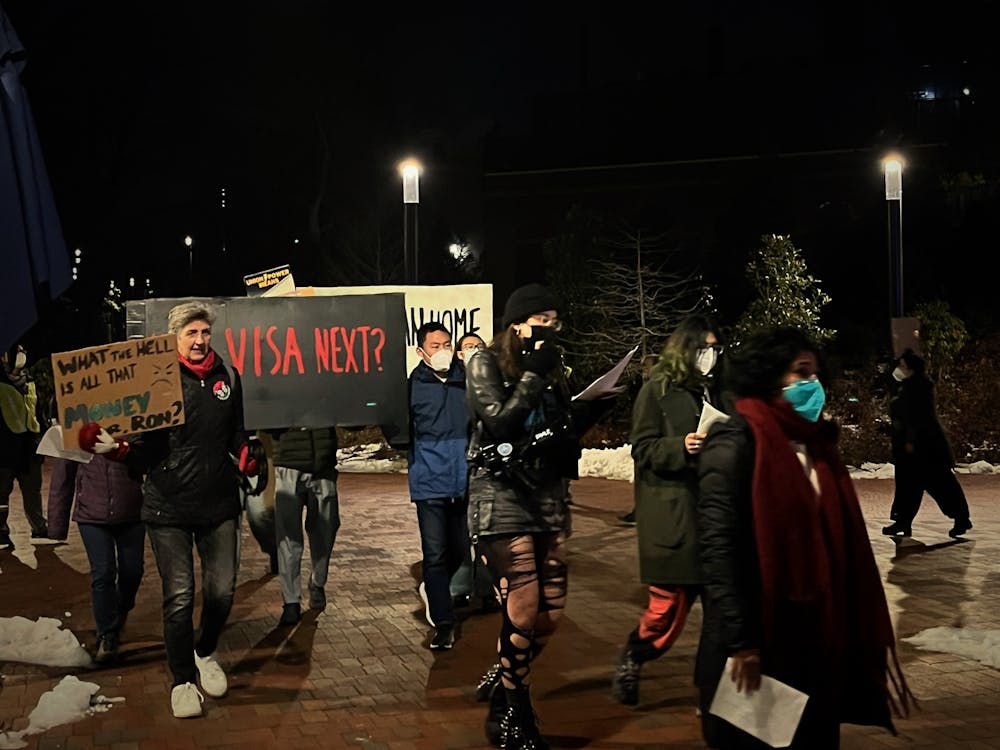The University has released data on the socioeconomic, racial and ethnic backgrounds of the class of 2028, marking the first admissions cycle since the Supreme Court's 2023 decision to restrict race-conscious admissions. While the academic qualifications of the new class remain consistent with previous years, the percentage of students from underrepresented racial groups has declined sharply from the data for incoming students in fall of 2023. The proportion of Black students dropped from 13.8% to 5.7% while Hispanic or Latino students fell from 20.8% to 10.7%. The percentage of incoming students who reported identifying with underrepresented groups dropped from 37% in 2023 to 17.6% this year.
The large drop in the percentage of underrepresented groups on campus comes after years of comes after years of steady increase. Since Fall 2010, Hopkins has reported increases in Black and Hispanic student numbers, which had doubled by Fall 2023. For example, Black or African American students made up 5.8% of the class of 2014 and 13.8% of the class of 2027. Likewise, Hispanic students made up only 8% of the class of 2014 but 20.8% of the class of 2027. This year’s outcome effectively reverts percentages back to numbers recorded in 2010.
The percentage of students who identifies as Asian has increased from 32.1% for the class of 2027 to 46% for the class of 2028. This is over double the percentage of Asians of the class of 2014.
White students made up 39.1% of the class of 2027, which dropped slightly to 34.1% for the class of 2028.
Despite the reduction in racial diversity, the University saw notable increases in socioeconomic diversity. The percentage of students from low-income backgrounds, as measured by federal Pell Grant eligibility, reached 23.8%, the highest in Hopkins' history. Additionally, the proportion of first-generation college students rose from 19.4% to 20.3%.
Other private universities across the country have experienced similar shifts in student demographics. At Harvard, the number of Black students fell from 18% to 14%. At Brown, 27% of the incoming class of 2023 were from underrepresented groups, while this year, this number has dropped to 18%.
University officials expressed disappointment over the drop in racial diversity but emphasized their commitment to fostering a diverse student body through race-neutral strategies. These include continued outreach to high schools with significant minority populations, collaborations with community organizations, and efforts to recruit high-achieving students from rural and urban communities.
In an email sent to students earlier today, President Ronald J. Daniels described the University’s commitment to diversity in all forms — socioeconomic, geographic and cultural — while maintaining compliance with the Supreme Court's decision.
“Looking forward, our commitment to building and supporting a diverse class is unwavering. We are turning that same intensive focus on the development of strategies that allow us to attract a student body reflecting the rich and varied constellation of this country while fully complying with the Supreme Court’s restriction on the consideration of race in admissions, ” he wrote.
Editor’s Note, 2024: A previous version of this article incorrectly stated the percentage of Black students dropped from 9.8% to 3.5%. The correct percentage has been updated to 13.8% to 5.7%.
The News-Letter regrets this error.





